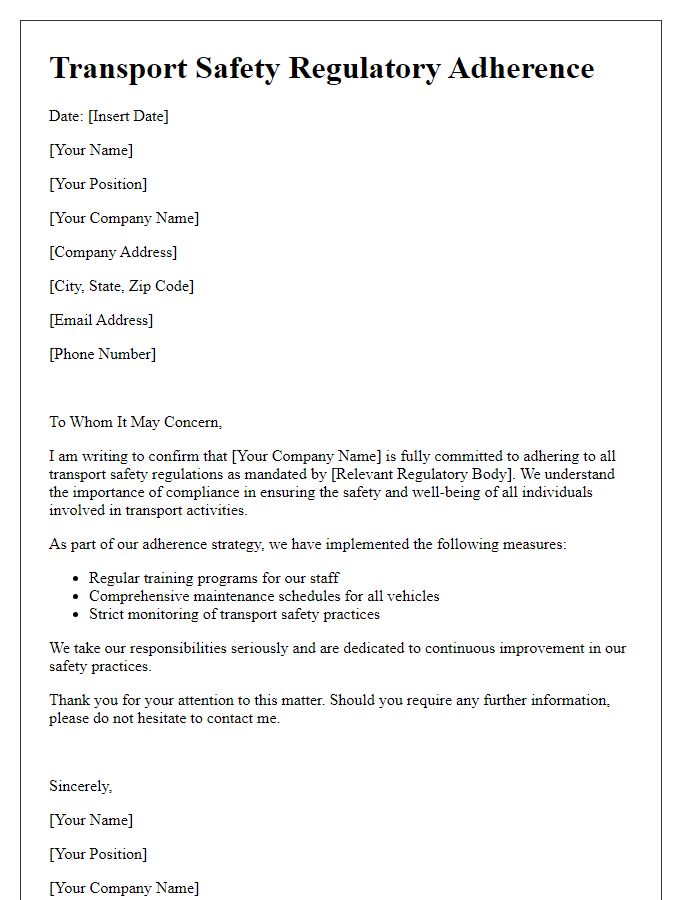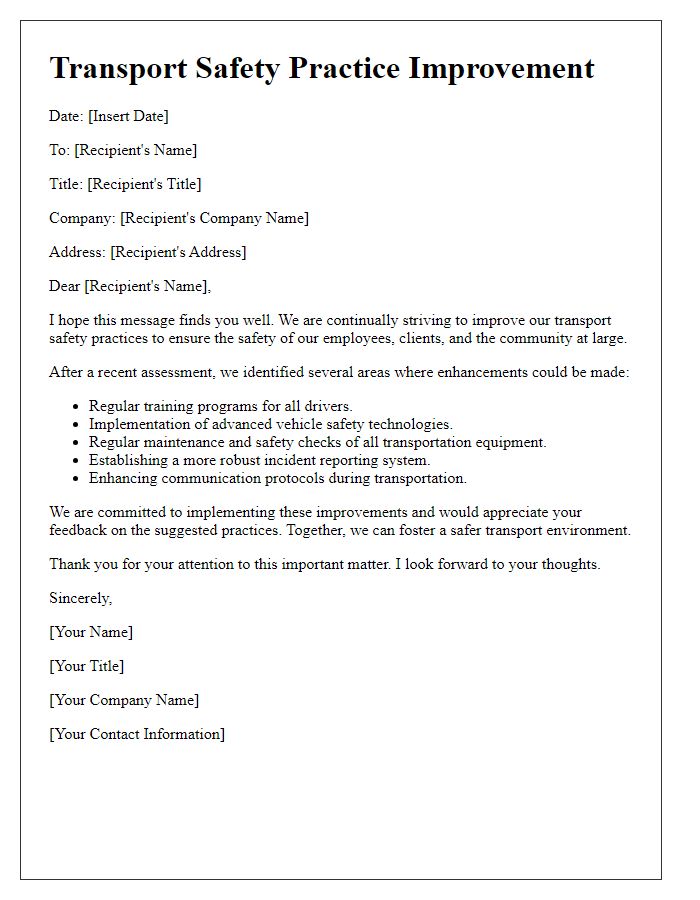In the ever-evolving world of transportation, ensuring safety compliance is more crucial than ever. Whether you're a business owner or a fleet manager, understanding the ins and outs of transport safety regulations can feel overwhelming. However, with the right guidance and resources, navigating these compliance requirements becomes a manageable task. So, if you're looking to enhance your knowledge on transport safety compliance and protect your operations, dive into the article for more insights!

Regulatory compliance requirements
Transport safety compliance is crucial in maintaining the integrity of the logistics industry, governed by various regulatory bodies such as the Federal Motor Carrier Safety Administration (FMCSA) in the United States. Key requirements include adhering to the Hours of Service (HOS) regulations, limiting drivers to a maximum of 11 hours of driving after 10 consecutive hours of rest, ensuring vehicles meet safety standards outlined by the National Highway Traffic Safety Administration (NHTSA), and conducting regular inspections, maintenance checks, and audits. Failing to comply with these regulations can result in significant penalties, including fines exceeding $10,000 and potential suspension of operating authority. Moreover, compliance with the Transportation Security Administration (TSA) protocols ensures the safeguarding of cargo, particularly in high-risk zones such as airports and seaports, reinforcing the importance of regulatory adherence for both public safety and organizational accountability.
Safety management system integration
Transport safety compliance involves the integration of a comprehensive Safety Management System (SMS) to effectively manage risks associated with transportation operations. A robust SMS includes components such as risk assessment procedures, incident reporting mechanisms, and employee training programs tailored specifically for the transport sector. Regulatory guidelines from agencies like the Federal Aviation Administration (FAA) or the Department of Transportation (DOT) emphasize the necessity of adhering to safety protocols, ensuring that both passengers and cargo are protected throughout transit. Additionally, incorporating technology such as GPS tracking systems enhances real-time monitoring, providing critical data for improving operational safety standards. The emphasis on continuous improvement and audits fosters a culture of accountability and awareness, essential for maintaining compliance in the ever-evolving landscape of transportation safety.
Employee training and certification
Employee training and certification for transport safety compliance is crucial in ensuring a safe operational environment in logistics sectors, such as trucking and freight operations. Comprehensive training programs, adhering to regulations outlined by the Department of Transportation (DOT) and the Occupational Safety and Health Administration (OSHA), focus on best practices for vehicle handling, cargo securing, and emergency response protocols. Certification processes involve assessments and practical evaluations to verify proficiency in risk management and safety procedures. Regular refresher courses are essential for maintaining up-to-date knowledge on safety regulations and technological advancements, helping employees stay informed about incident prevention strategies and compliance requirements. Stakeholder engagement in safety training fosters a culture of awareness and accountability within the transportation workforce.
Risk assessment and mitigation strategies
Transport safety compliance involves rigorous risk assessment and effective mitigation strategies to ensure the safety of cargo transportation. Key factors include identifying potential hazards, such as vehicle breakdowns, adverse weather conditions, and human error. A risk assessment framework typically evaluates factors like historical accident data, road conditions in urban areas, and safety protocols in transport hubs. Mitigation strategies may encompass advanced driver training programs, implementation of GPS tracking systems for real-time navigation and monitoring, and regular maintenance schedules for vehicles to enhance reliability. Compliance with regulations such as the Occupational Safety and Health Administration (OSHA) standards is crucial, alongside adherence to the guidelines set by the Federal Motor Carrier Safety Administration (FMCSA). Regular audits of safety practices and employee feedback mechanisms contribute to a culture of safety, further reducing potential risks in transportation operations.
Emergency response protocols
Emergency response protocols play a critical role in ensuring transport safety across various modes of transportation, including aviation, maritime, and road transport. These protocols outline procedures for addressing incidents such as accidents, natural disasters, or hazardous material spills, specifically designed to minimize risks to human life and property. Key elements include the immediate notification of emergency services, evacuation routes, and communication plans for coordination among law enforcement, emergency medical services, and transport authorities. Regular drills and training sessions are essential to familiarize personnel with these protocols and improve response times during actual emergencies. Compliance with these protocols not only helps in safeguarding the wellbeing of passengers and crew but also reinforces the reputation of transport organizations in maintaining safety standards.













Comments